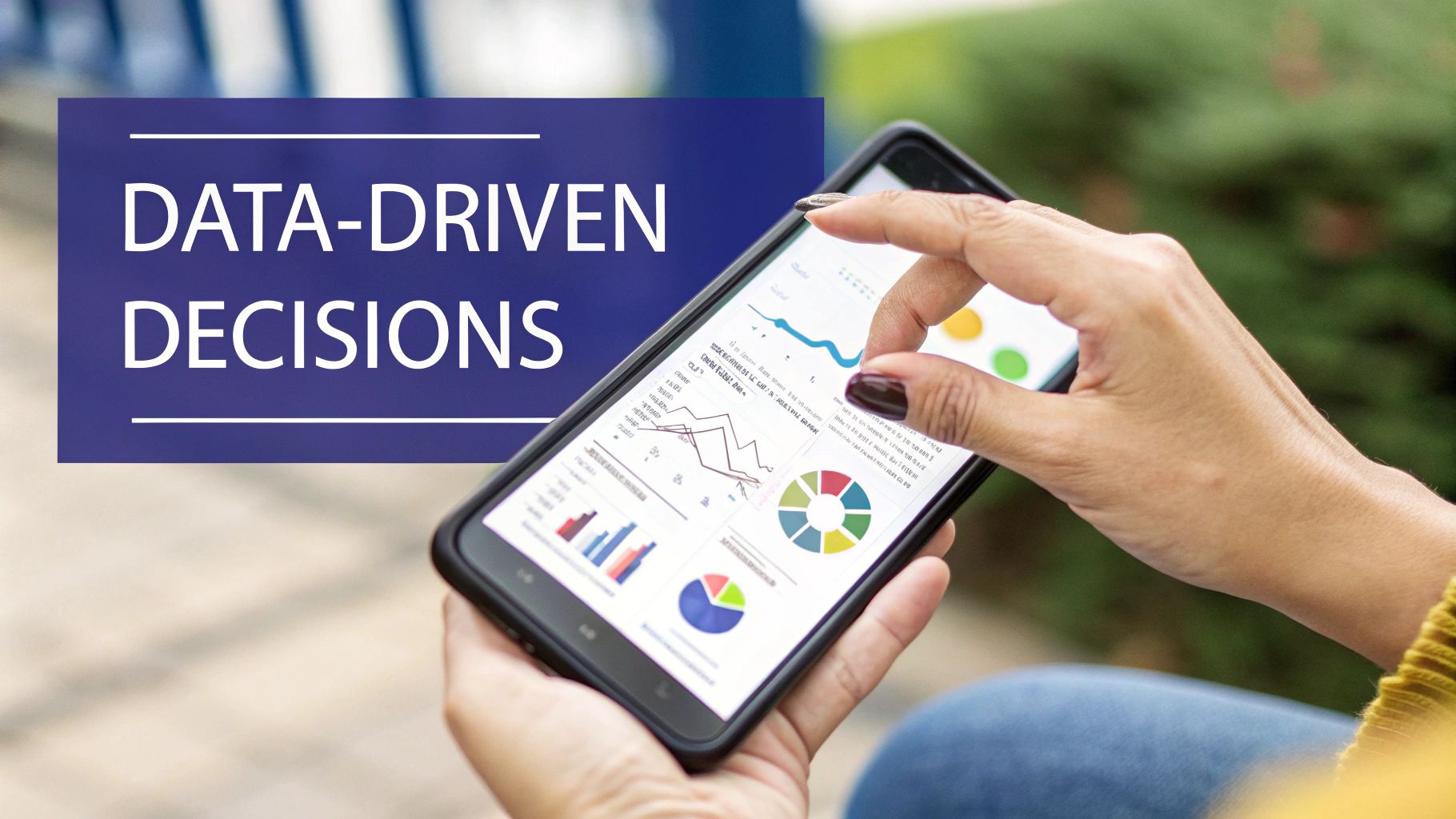Understanding the Real Impact of Marketing Automation

What happens when businesses move beyond basic marketing tasks and embrace true marketing automation? The results go far beyond just sending more emails – successful companies are seeing real growth by using automation strategically to connect with customers. The numbers tell a compelling story – businesses that implement marketing automation well earn $5.44 for every dollar invested. For marketing teams looking to drive meaningful results, understanding how to properly leverage automation has become essential for staying ahead.
Measuring the ROI of Marketing Automation
The business case for marketing automation is clear when you look at the returns. Most companies recoup their investment within six months through increased efficiency and better lead nurturing. By automating repetitive tasks, teams can redirect their energy to high-value strategic work instead of manual processes. The impact is measurable – businesses typically see overhead costs drop by 12.2% after implementing automation. These tangible benefits show why marketing automation should be a key consideration for any growth-focused organization.
The Power of Data-Driven Insights
At its core, effective marketing automation relies on understanding customer behavior through data. By tracking how people interact with campaigns and content, companies gain valuable insights into what resonates with their audience. This allows for precisely timed, personalized outreach that connects with customers at the right moment. For example, lead scoring helps identify the most promising prospects based on their engagement patterns. Teams can then focus their efforts on these high-potential leads with relevant messaging. The result? Higher conversion rates and more efficient use of marketing resources.
Beyond the Numbers: Qualitative Impacts
While ROI and lead generation metrics are important, marketing automation delivers equally valuable qualitative benefits. It enables companies to build authentic connections with customers through personalized experiences, even at scale. Marketing teams gain the bandwidth to focus on creative strategy and campaign planning rather than repetitive tasks. Take email marketing and social media – by automating these routine activities, marketers can invest more energy in developing compelling campaigns that truly engage their audience. This combination of efficiency gains and enhanced relationship building makes marketing automation a powerful tool for businesses aiming to grow while staying customer-focused.
Building a Lead Generation Engine That Actually Works
Let's explore how successful companies set up effective lead generation systems through marketing automation. While many businesses struggle to generate consistent leads, the right approach can help you create a reliable pipeline of interested prospects. Here's how to structure your lead capture and nurturing processes the right way.
Optimizing Lead Capture: The First Impression
The way you first connect with potential leads sets the tone for the entire relationship. Your lead capture forms should strike the perfect balance – collect essential information without overwhelming visitors. Keep forms short and focused, like having a friendly conversation rather than an interrogation. Make your call-to-action compelling by offering real value, such as exclusive research reports or educational webinars, in exchange for contact details. This gives you the data needed to effectively segment and communicate with leads.
Nurturing Leads: Guiding the Journey
After capturing leads, the key is thoughtful nurturing that moves them closer to purchase. This is where marketing automation proves invaluable. Set up targeted email sequences that deliver relevant content based on each lead's interests and actions. For instance, if someone downloads an ebook about social media marketing, follow up with case studies showing real results from social campaigns. This personalized approach keeps leads engaged while establishing your brand as a trusted advisor. Just as a garden needs consistent care to flourish, lead nurturing requires ongoing attention.
Avoiding Automation Pitfalls: Maintaining the Human Touch
Marketing automation can be powerful, but it shouldn't feel robotic. Generic, impersonal messages quickly turn leads away. The most successful companies find ways to make automated communications feel personal and authentic. Use the lead's name, reference their specific interests, and write in a conversational tone. Think of adding thoughtful personal touches throughout the process, like sending a handwritten note after an important milestone. This human element makes automated sequences more engaging and effective. Companies that balance automation with personalization see a 451% increase in qualified leads on average.
Scaling Operations While Maintaining Lead Quality
As your lead generation efforts expand, marketing automation helps you maintain quality while increasing volume. The key is continuously monitoring and optimizing your automated workflows based on performance data. Track metrics like email open rates, click-through rates, and conversion rates to identify what's working and what needs adjustment. Integrate your CRM with your marketing automation platform to maintain a complete view of the lead journey. This allows sales and marketing teams to collaborate effectively as you scale. Top performing companies achieve 15-20% conversion rates through this integrated, data-driven approach.
Creating Personalized Experiences at Scale

Success in lead nurturing depends on guiding potential customers through the sales process in a way that feels personal and relevant. Rather than simply collecting contact information, companies must create meaningful connections with each prospect. The most effective businesses accomplish this by thoughtfully using automation to deliver personalized experiences at the right moments.
Segmentation and Behavioral Tracking: The Foundation of Personalization
Getting personalization right starts with understanding your audience through careful segmentation and tracking. By grouping customers based on factors like industry, company size, or role, you can craft messages that address their specific challenges. For instance, a marketing message for a CFO should highlight cost savings and ROI, while one for a CTO might focus on technical capabilities and implementation. Tracking how people interact with your content – which emails they open, pages they visit, resources they download – reveals their interests and helps you time your outreach perfectly. Much like a skilled chef adjusts recipes based on diners' tastes, effective segmentation uses data to shape experiences that resonate with each customer group.
Balancing Personalization with Efficiency: The Automation Advantage
While personalizing at scale seems daunting, smart automation makes it possible. The right tools let you deliver customized experiences efficiently, even with thousands of contacts. By automating routine tasks like sending emails and social posts, your team can focus on developing compelling content and strategy. For example, instead of manually sending follow-up emails, set up automated sequences triggered by specific actions – but ensure each message feels personal and relevant. This balanced approach helps you scale personalization without sacrificing quality.
Avoiding Automation Mishaps: Maintaining Authenticity
Generic, robotic-sounding messages can quickly turn customers away and damage trust. To keep communications authentic, use the customer's name, reference their past interactions, and write conversationally – as if speaking to a friend. Compare receiving "Dear Valued Customer" versus "Hi Sarah, I noticed you downloaded our guide on social media strategy…" The personal touch shows you value the relationship. Companies that maintain this human element see much stronger results – studies show businesses using personalized automation well generate 451% more qualified leads.
Implementing Dynamic Content: Resonating with Your Audience
Dynamic content takes personalization further by automatically adapting what each person sees based on their profile and behavior. This could mean showing different images, calls-to-action, or product recommendations based on past purchases, browsing history, or demographics. Think of it as a website that shifts to highlight what matters most to each visitor. When someone in healthcare sees industry-specific case studies while a retail visitor sees relevant success stories, the experience becomes more engaging and meaningful. Using automation thoughtfully in this way ensures your messages connect authentically with each audience segment while building lasting customer relationships that fuel growth.
Leveraging AI Without Losing the Human Touch
Effective marketing automation combines the power of AI with authentic human connection. While AI has become essential for scaling personalized experiences, the key is finding the right balance between automation and maintaining genuine relationships with customers. Let's explore how to integrate AI thoughtfully while preserving the human elements that build trust.
Understanding the Role of AI in Marketing Automation
AI brings remarkable capabilities to marketing automation that complement human efforts. For example, AI algorithms can spot subtle patterns in customer behavior data that humans might miss, leading to more accurate targeting and personalized messaging. This deeper insight helps marketers anticipate customer needs and deliver relevant content at just the right moment. The result? Higher engagement rates and more conversions through data-driven personalization that feels natural, not forced.
Implementing AI: Practical Steps and Considerations
Adding AI to your marketing doesn't require rebuilding everything from scratch. Start by identifying specific areas where AI can make the biggest difference:
- Lead Scoring: Let AI analyze behavior patterns and demographics to identify your most promising leads
- Content Personalization: Use AI to customize content based on individual preferences and past interactions
- Campaign Optimization: Allow AI to fine-tune factors like timing and channel selection for better performance
Striking the Right Balance: Human Oversight and AI Automation
While AI excels at tasks like analyzing data and automating processes, human judgment remains essential for maintaining authenticity. Take email marketing – AI can draft subject lines and content, but human editors should review everything to ensure it matches your brand voice and connects genuinely with readers. You might be interested in: How to master visualizing customer feedback data. This partnership between AI and human oversight helps companies scale personalization while building real relationships with customers.
Recognizing the Warning Signs: When Automation Becomes Impersonal
Watch for these red flags that signal your AI implementation may be hurting customer relationships:
- Generic Messaging: If your automated communications feel mass-produced and impersonal, it's time to adjust your approach
- Lack of Human Interaction: Make sure customers can easily reach real people, especially for complex issues
- Ignoring Customer Feedback: Use customer input to continuously improve your AI systems and processes
By thoughtfully combining AI's analytical strengths with human empathy and insight, businesses can create automated marketing that still feels personal and builds lasting customer relationships. With 63% of marketers increasing automation spending and projected AI-powered marketing automation revenue reaching $14 billion by 2025, finding this balance is crucial for staying competitive while maintaining authentic connections.
Aligning Sales and Marketing Through Automation

Getting marketing automation right requires bringing sales and marketing teams together. When these departments work in sync, companies see up to 20% more sales opportunities. But what does effective alignment through automation actually look like? Let's explore the key strategies that make this collaboration work.
Creating Seamless Handoffs Between Marketing and Sales
The handoff from marketing to sales is a critical moment that can make or break deals. Smart automation ensures qualified leads get passed to sales at exactly the right time. For instance, when a lead's engagement score hits a certain threshold based on their interactions with content, sales gets an instant alert with the lead's full history. This means sales can reach out while interest is high, armed with insights about what content resonated with that specific prospect.
Improving Pipeline Visibility With Automation
Clear visibility into the sales pipeline helps both teams operate more effectively. By connecting your marketing automation platform with your CRM, you create one source of truth for tracking leads from first touch to closed deal. Sales can see how prospects engaged with marketing campaigns before becoming leads. Marketing gains insight into which types of leads convert best, allowing them to optimize their programs. This shared view enables true collaboration and better results.
Maintaining Lead Quality Through the Buyer's Journey
Lead quality makes all the difference in sales success rates. Automated scoring and segmentation help identify the most promising prospects based on their behavior and fit. Think of it as a smart filter that helps sales focus their limited time on leads most likely to convert. When marketing passes only qualified leads to sales, the entire process becomes more efficient and productive for everyone involved.
Measuring Success: Metrics That Matter to Both Teams
Meaningful alignment requires shared metrics that show how both teams contribute to growth. Track key indicators like conversion rates at each pipeline stage, revenue generated per lead source, and average sales cycle length. For example, monitoring what percentage of marketing-qualified leads become sales opportunities reveals if lead quality standards match sales team needs. Regular review of these metrics helps fine-tune automated workflows for better results. When teams celebrate wins together and solve challenges collaboratively, marketing automation delivers maximum value.
Implementation Strategies That Drive Results

Getting real value from marketing automation takes more than selecting software – it requires careful planning across team capabilities, technology, and growth. Companies that follow a strategic approach often see their investment pay off within six months. Let's explore the key steps to make your automation platform deliver results from day one.
Building a Skilled Marketing Automation Team
Your team's expertise directly impacts automation success. Start by providing thorough training on every aspect of your platform – from basic setup to advanced features. Team members need hands-on practice building automated workflows, creating audience segments, and analyzing campaign data. Regular training keeps skills fresh and introduces new techniques that improve campaign performance. The more your team knows, the better your results will be.
Integrating Your Technology Stack
Your automation platform works best when connected to your other marketing tools. By integrating with your CRM and related systems, you create a complete view of customer interactions. Sales teams can see how leads engage with marketing campaigns, enabling more informed follow-up conversations. When data flows smoothly between systems, nothing falls through the cracks.
Scaling Your Marketing Automation Efforts
As your company grows, your automation approach needs to evolve too. Begin with a focused pilot program in one area, like email campaigns or lead nurturing. This lets you perfect your processes before expanding further. Track key metrics like conversion rates to ensure your automation strategy aligns with business goals. Gradually add more channels and campaigns as you prove success, avoiding disruption while maximizing long-term results.
Planning for Different Business Sizes and Types
Your automation needs vary based on company size and focus. Small businesses often start simple, automating basic tasks with straightforward platforms. Large enterprises typically need robust solutions with advanced capabilities. B2B companies focus heavily on lead nurturing, while B2C businesses prioritize customer experience and retention. Choose a flexible system that can grow with you. Read also: How to master automating feedback workflows. The right platform will continue delivering value as your business expands.
Start streamlining your feedback process and enhance team collaboration today with BugSmash. Try BugSmash for free.